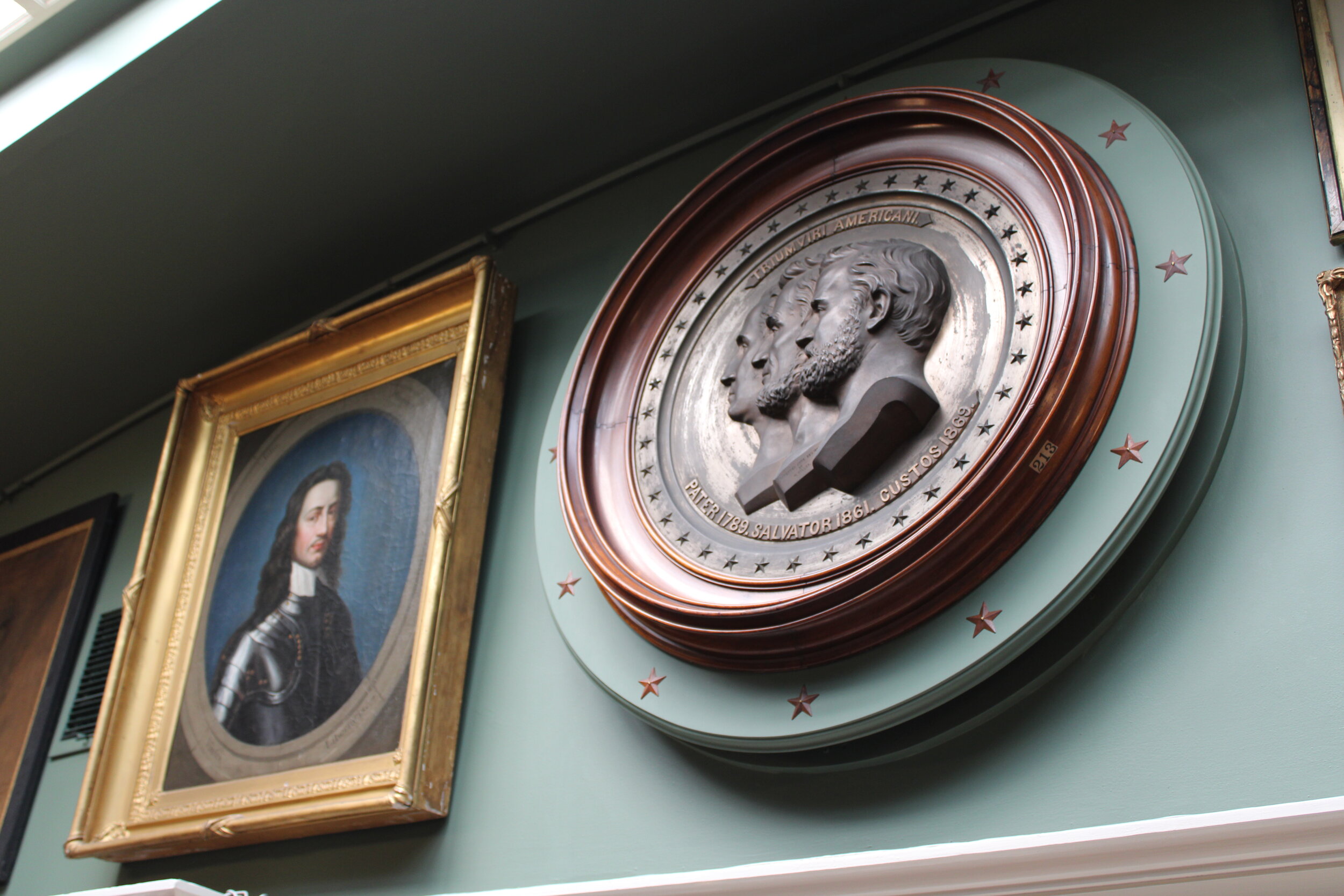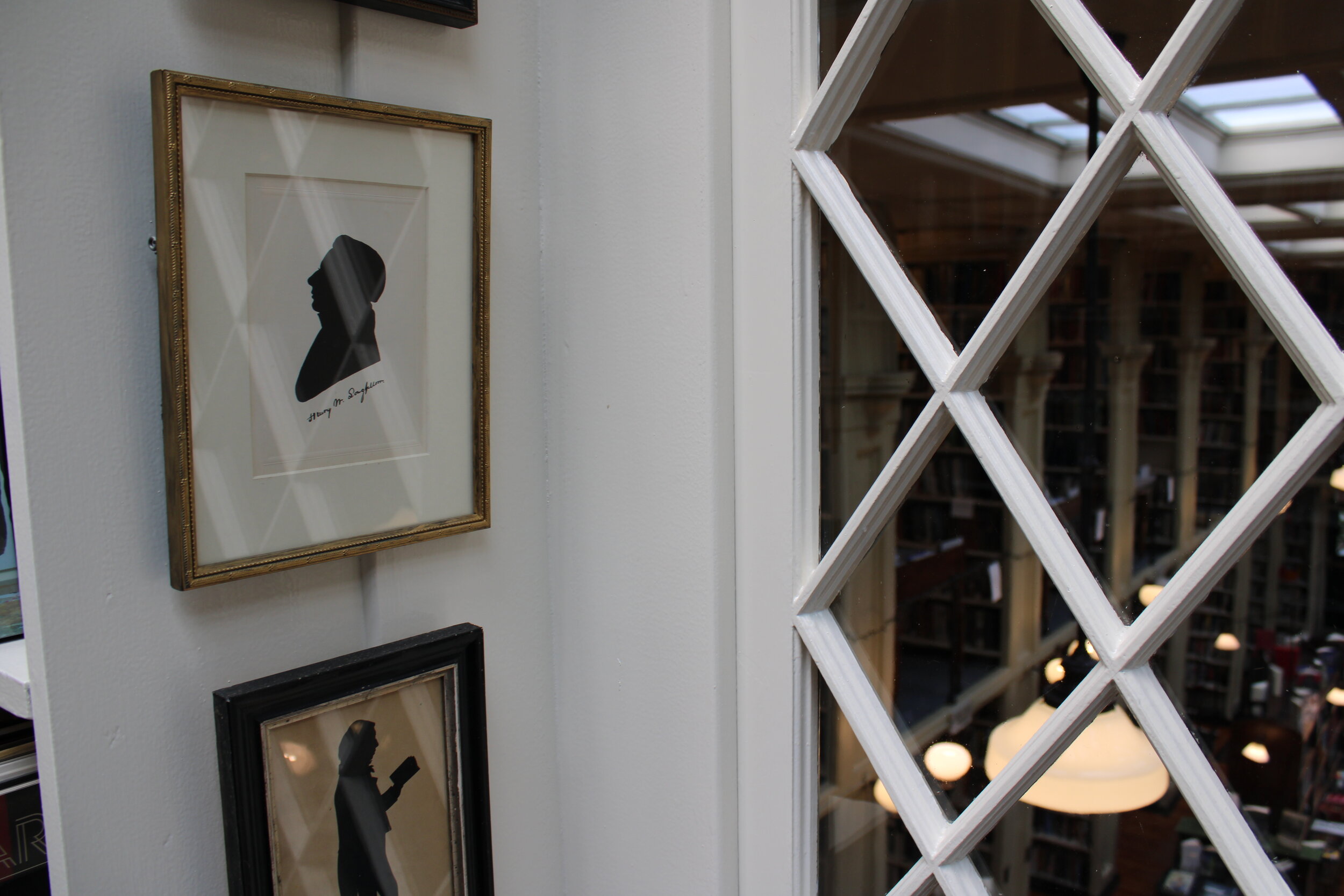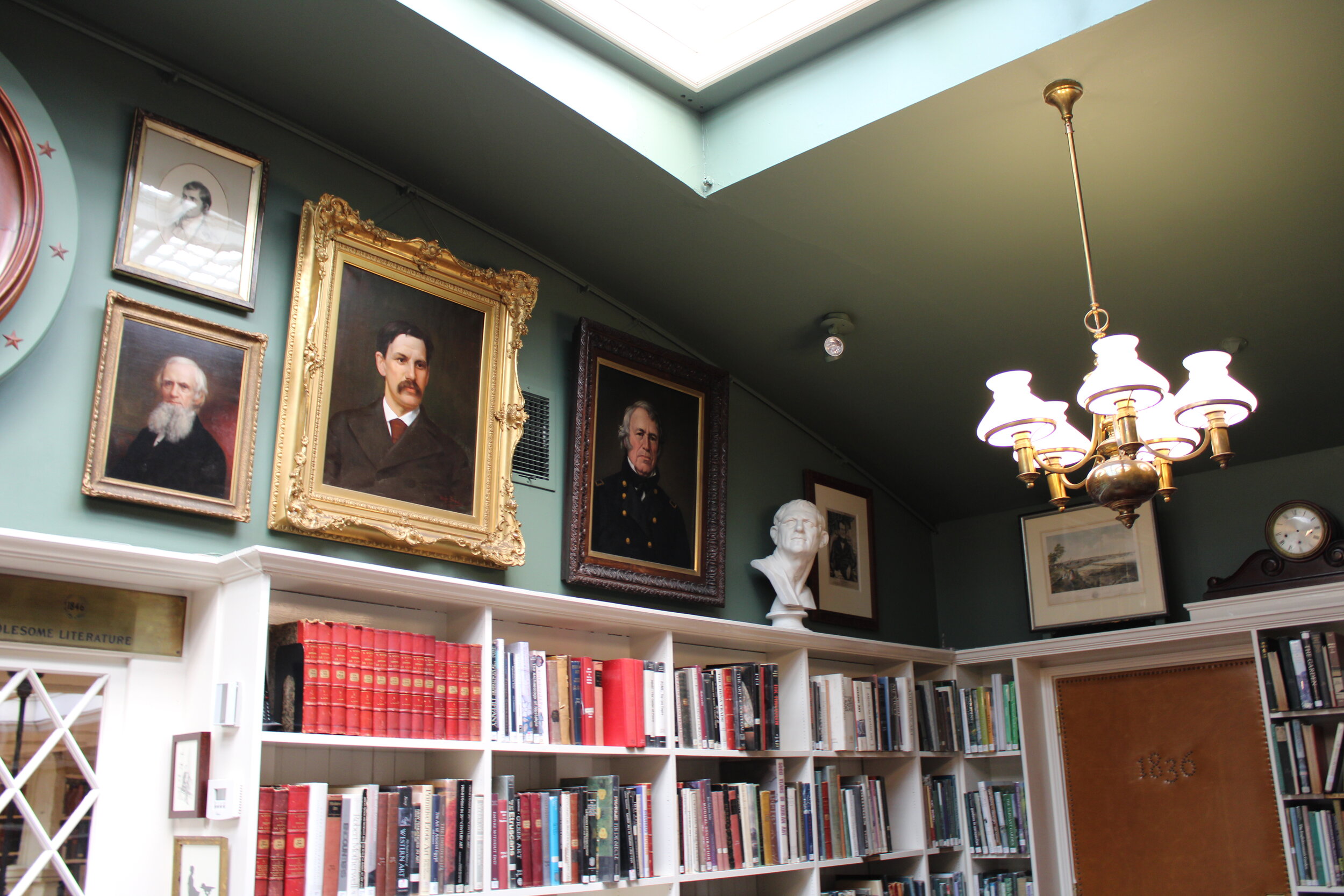The nineteenth century in America was a notable boom time for the visual arts in the United States. Between the end of the American Civil War and 1900, many of the nation’s most notable arts institutions were founded, including Yale’s School of Art, the Metropolitan Museum, the Art Institute of Chicago, and the Pennsylvania Academy, to name a few. Americans were, more or less en masse, taking hold of their own cultural aspirations. They developed their own schools in which to study art and museums in which to showcase their growing collections. In Providence, Rhode Island, the arty excitement of the moment was borne out too. In 1877 the Rhode Island School of Design was founded, in 1880 the Providence Art Club followed, and in the mid 1890s the established Providence Athenaeum added a new space dedicated to the visual arts. Recently, the Athenaeum’s Art Room was remade in glorious style. The result is a delightfully artful enclave within a bookworm’s paradise.
The Athenaeum is one of the region’s cultural gems. Founded in 1836, it draws on a heritage of book lovers that can be traced as far back as 1753 when one of its predecessor organizations, The Providence Library Company, was established. A members’ lending library with a populist appeal, the Athenaeum is housed in a stoic temple designed by William Strickland and sited gracefully on the brow of College Hill. The building, which has the look of an ancient vault of knowledge, was opened in 1838. A stone's throw from Brown University and RISD, the Athenaeum is not only the reserve of bibliophiles, but counts among its membership and its wider fanbase people of diverse backgrounds. These days it isn’t uncommon to find an Instagram influencer making a pitstop in the library’s hallowed carrels.
The stately facade of the Athenaeum on a late spring afternoon. A banner with the Rhode Island state motto “Hope” is strung between the doric columns that flank the main entry.
Recently, Athenaeum Director of Collections and Library services Kate Wodehouse generously offered to host me for a visit to the library’s refurbished Art Room. On a bright afternoon I made the five minute walk from my office at the Providence Art Club to our neighboring organization to take Kate up on her collegial hospitality. Located on Benefit Street, itself lined with an unparalleled collection of homes dating to the eighteenth century, the Athenaeum’s crisp and stoney grey facade is set off against the verdant foliage of late spring in New England. Upon my arrival Kate quickly whisked me through the library’s warren of stacks to the uppermost room of the building. Ushered through an unassuming door, one finds a glimpse of the enthusiasm for art that abounded just prior to the turn of the century.
Created in 1896, the Art Room was to be both a place of studious solitude, as well as a latter day cabinet of curiosities. It is tucked away just behind the revival pediment of the Athenaeum’s facade and is accessed from the library’s distinctive and cozy mezzanines. At the entrance one is greeted by a bust of the Providence-born art critic Albert J. Jones, who famously left the bequest that resulted in the foundation of the neighboring RISD Museum. This was to be another hallmark moment in the advancement of art in the city during the period. Just outside the entry to the Art Room the careful observer will also find a fantastic diminutive nocturne of the Athenaeum painted by printmaker Eliza Gardiner hung discreetly under a sconce.
Entering the Art Room from this curated landing, one finds a space that has received a top-to-bottom restoration. Refreshed in new tones, a lush green canopy of a ceiling overhangs the space, where paintings and busts from the Athenaeum’s collection are displayed together in artful repose. Here, portraits of the likes of Edgar Allan Poe surmount shelves filled with texts on art of all kinds. A window in the space looks out on the library’s photogenic main hall. It is both a suitable backdrop for cultured contemplation as well as a fitting vantage point for people-watching. The window’s inviting seat is newly bedecked in a William Morris textile, a pattern popular among Arts and Crafts devotees who were also experiencing an expansion in their ranks around the time the space was devised.
The Athenaeum’s refurbished Art Room sports freshly repainted surfaces and newly reinstalled art.
Within this context, one is immediately impressed by the density of the installation. Although wall space is at a premium in this bookcase-lined room, there is ample art on view. Primarily a collection of portraiture, the result is a feeling of accompaniment in the pursuit of knowledge.
In the center of the ceiling, a generous skylight has also been glitteringly refurbished. It fills the room with natural light, which falls glintingly on the glass-topped stuffed raven that holds court at the center of a Chinese-export inlay table. Nearby, a bust of Charles Darwin by nineteenth century sculptor Jane Nye Hammond stares out unflinchingly. Pendant tables at either end of the room are now encircled with elegant black chairs designed by the local firm O&G Studio in a style appropriate for an institution of this period. Each has a brass plaque with the name of a donor who commissioned it for the purpose of this restoration.
Other details include an expertly conserved portrait by Hugo Breul, tiny silhouettes of reading characters, and an enormous patriotic bronze relief installed creatively to hide a meddlesome air vent.
A window in the Art Room looks out on the main hall of the historic library. It is topped by a bronze frieze installed during the restoration.
Even after an all-too-brief visit, the Athenaeum’s Art Room is already one of my new favorite places in town. To those who were already well-acquainted with it, seeing the remodel is akin to reuniting with an old friend who looks better than ever. The whole assemblage is not only a beautiful and thoughtful restoration, but a tribute to the spirit of the library’s community throughout the years and an exploration of a zest for art that dates to the 1890’s.
Much of the handiwork involved in making this revised Art Room a reality was that of Tripp Evans, a passionate member and volunteer. When he is not busy painting woodwork and reinstalling art, he also teaches art history as a professor at Wheaton College. The work he, and other volunteers, and Athenaeum staff like Kate have done is a continuation of the labor of many art lovers through history.
To step into the Art Room is to step back in time and to be in the blossoming art world of the late nineteenth century. I found myself at one point saying to my host that I myself wish art people today might take the same sort of bohemian glee in creating an environment as our counterparts did over a century ago. Far from being stuffy or staid or polite, the American cultural scene of this time was an exciting and even boisterous one. Rooms like the one recently restored at the Athenaeum were not just venues for quiet reading, but for serious and spirited debates about the visual arts in America.
It would be appropriate then, if this renovation sparks the kind of excitement that it merits and helps those who enter the Athenaeum’s Art Room to reimagine and interrogate art’s histories and its futures.
Under the glow of brass light fixtures and the Art Room’s skylight, portraits peer out over art books.
As much as it was an exciting place when the Art Room was added in 1896, The Athenaeum is also one today. In the last decade or so it has undergone, to use a much overused word, something of a renaissance. Always a great institution, it has recently become a decidedly hip one. It has mounted exciting public programs, refreshed its digital presence, and even restored the long dormant fountain which stands in front of its main entrance on stately Benefit Street. The renovation of the Art Room is just another feather in the cap, and a crowning one, which celebrates the unique and timeless spirit associated with this great landmark.
As my visit to the wonderfully inspiring Art Room came to a close I headed back out into the main body of the library. When exiting the space, one passes through a door newly clad in supple caramel leather. Tacks in the center of the door spell out “1836”, the year of the institution’s founding. Exiting onto the snug landing outside, one is faced with the latin phrase Ars Longa, Vita Brevis freshly stenciled in gilded letters on the green wall. To one side, the bust of Albert J. Jones stands sentry next to a vintage photograph of the Roman ruins that inspired him.
The quotation above the steps, which was added to the space during the successful remodel, rings true from antiquity to today. It means Art is Long, Life is Brief.
Below, enjoy a gallery of photographs below that I took on my recent visit to the Athenaeum’s Art Room. Thanks again to my colleague Kate Wodehouse for her gracious hospitality. As of this writing, the Athenaeum is open only to their members due to current restrictions. Visit providenceathenaeum.org for more information.













